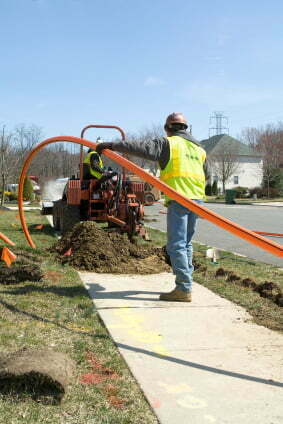Fiber-Optic Consent Requests

Cell tower landowners and building owners across the country are being besieged by requests from wireless carriers to add fiber-optic communications to their cell sites. Due to a consistent increase in data usage (45% year over year growth), wireless carriers must become adept at moving significantly more data to and from their sites with greater speed and reliability. To do this, they are replacing traditional copper telephone wires with fiber-optic cables. The problem is that the nearest location of fiber-optic cable to the property is often not the same location as the nearest telephone demarcation. Even when the fiber-optic cable is close to the telephone demarcation, it could be cheaper for the fiber-optics company to route it elsewhere across the property. When this is the case, companies will send out generic looking consent letters that essentially say: “We have the right to bring in utilities to your property. Please consent to [this] location.” What the wireless carriers do not tell you is that under the terms of your existing lease agreement, they might not have the right to utilize the proposed location of the fiber-optic cables; the truth of the matter is that this additional consent agreement is, in fact, a new easement that you as a landowner have no obligation to accept. Rarely are the carriers willing to pay for this easement, so they attempt to make it seem as though it is their right to begin with. You should be aware that, in some situations, fiber-optic companies try to add equipment outside of the wireless carrier’s pre-determined lease area because the wireless carrier or tower company would charge them additional fees if they worked within the existing lease area. It’s important that you understand what rights and obligations you truly have and what arrangement will serve your best interests.
If you have received a request to add fiber-optic communications to your property, here is what we suggest doing:
- Ask the wireless carrier representative to show you on a survey where your existing utility access is and whether the proposed fiber-optic cable route will be within that same utility easement. If not, tell them you prefer that they use the existing easement rather than encumber your property further.
- If they claim they can put the easement anywhere on the property they want, ask the carrier representative to show you in the lease where it allows them to add new utility easements to the property. In some cases, the carrier does have the right to add fiber-optic cable; however, that doesn’t mean that they can add fiber-optic cable where it is cheapest and easiest for them.
- Review the proposed drawings to determine whether they include above ground equipment that is being placed on your property, especially if the equipment is being placed outside of the easement. Depending upon the language and terms of your lease, the carrier may have the right to place above-ground equipment within the existing easement. If you have any questions about what your lease allows or does not allow, please reach out to an attorney that specializes in cell tower leases.
- If you are a building owner, determine whether the fiber-optic company intends to install additional conduit in the building for the installation of new fiber. See whether this will include boring through or into the floors or walls. Ask them specifically what, if anything, prevents them from using the existing conduit. If they say there is no room, they may be lying and simply don’t want to add the fiber to the existing conduit because it is more difficult. Also, be informed that if they do need to install a new conduit on the outside of the building, they may, in fact, be expanding their lease area.
- If you determine that you are obliged to allow the fiber installation, make sure that you specifically ask the company how they intend to bury the cable. If they aren’t doing a direct bury, how are they going to repair the ensuing damage? If they buy under pavement, how are they going to patch the area? If under bare ground, will they replace the grass with sod?
In our experience, wireless carriers rarely agree to increase the rent payment for a fiber-optic easement, although, there are occasions where it does happen. Alternatively, they might be willing to pay a one-time fee for additional access to your property. You will need to determine whether the additional burden on the property is worth it. Please note that we aren’t advising you to refuse your consent altogether. In some states, fiber-optic companies are treated as utilities and you can’t prevent them from accessing their tenants (the wireless carriers) on the property you have rented. It’s also possible that your lease may grant the carrier fairly liberal rights to add fiber-optic cables at their discretion. In these cases, if you failed to provide consent, you could be in breach of the lease. Lastly, cell sites without fiber optic or microwave backhaul will become less valuable to the wireless carriers and in extreme cases, the carrier may choose to simply relocate the site to another location.
One question that we are frequently asked is whether a fiber-optic installation is a sublease and therefore means that the tower company is subleasing without paying their revenue share. It is very rare that the fiber-optic company pays the tower owner anything for bringing fiber onto the property. Thus, there is no sublease, and subsequently no revenue share payment.
If you have been approached about a fiber-optic cable and, after completing the steps above, feel that you don’t have to or wish to consent to the proposed installation, please reach out to us and we will review your situation and let you know whether we think we can help and, if so, what our fees would be for doing so.











